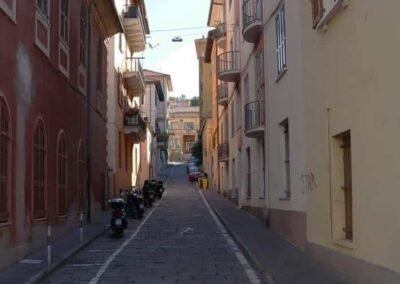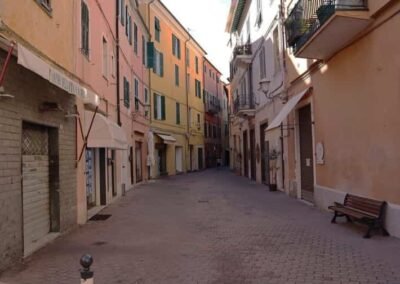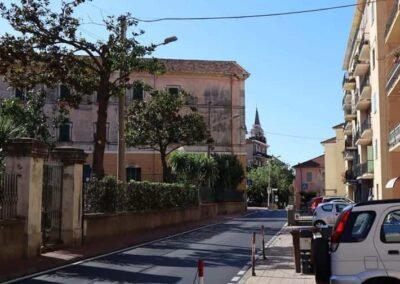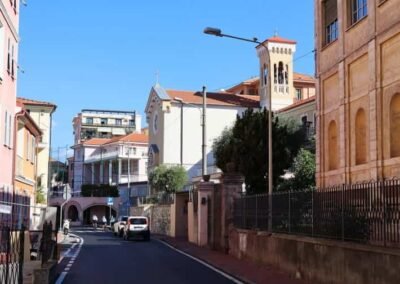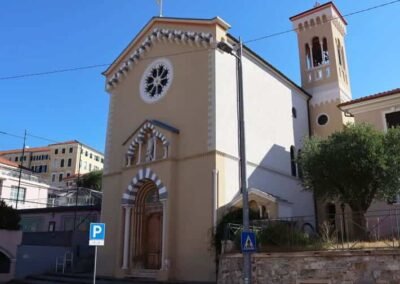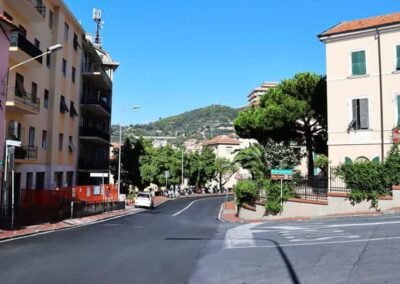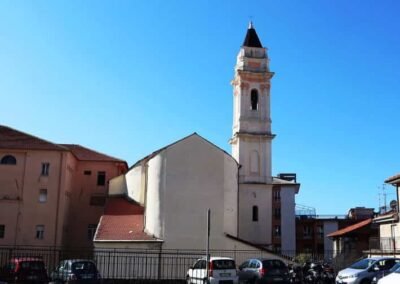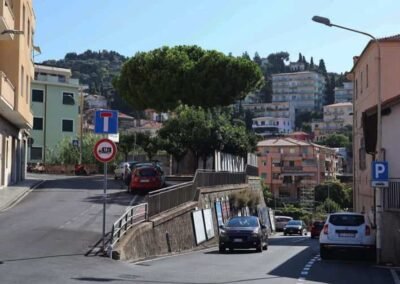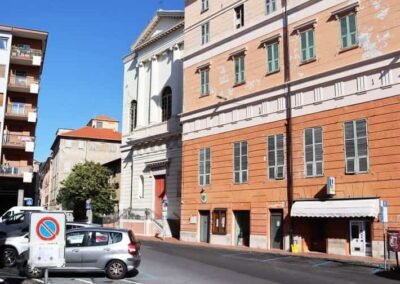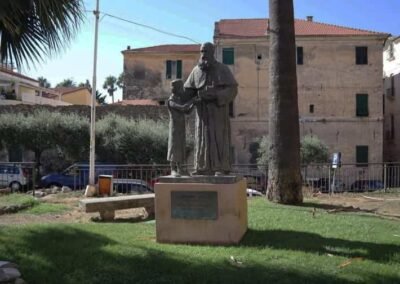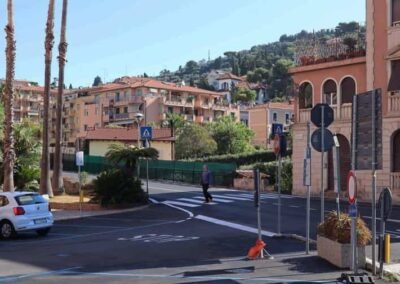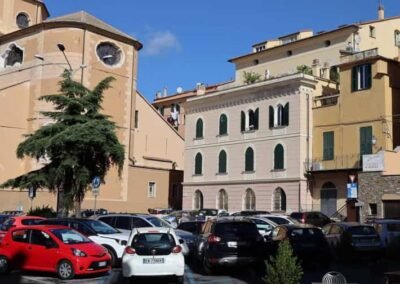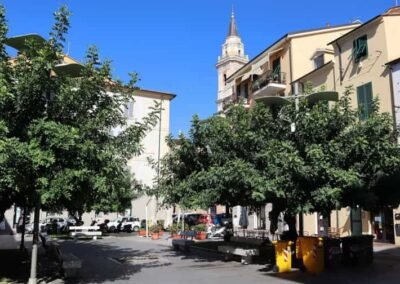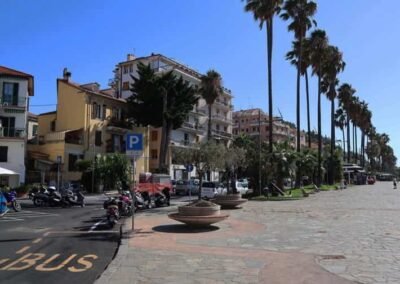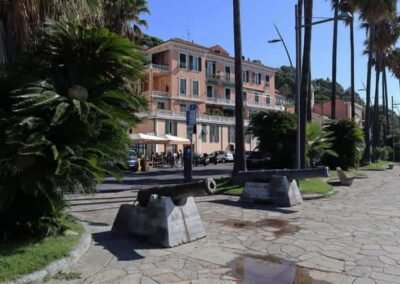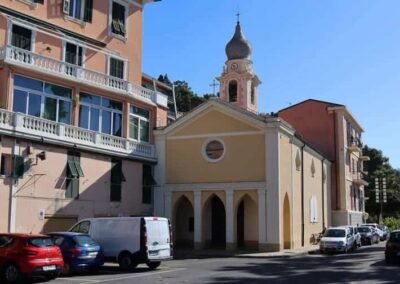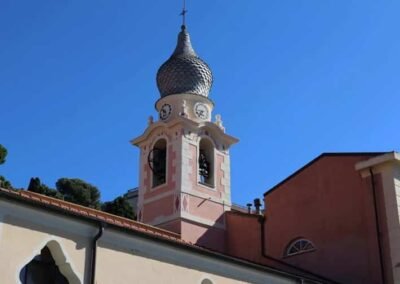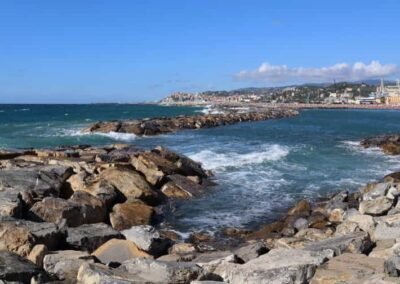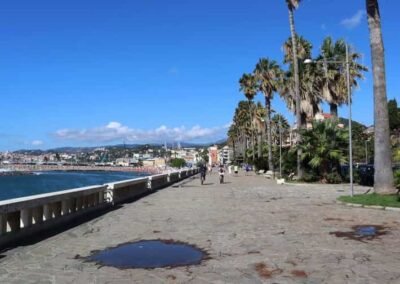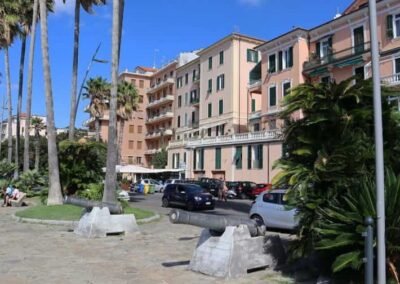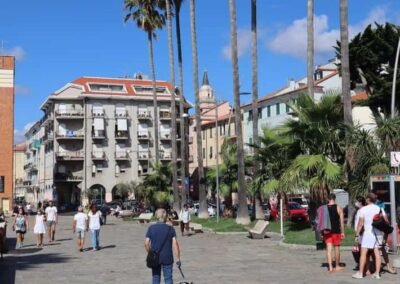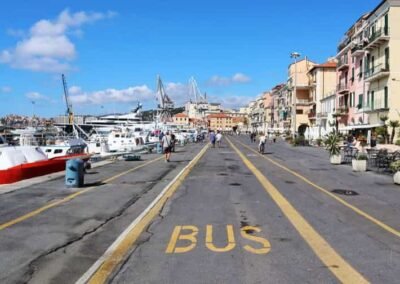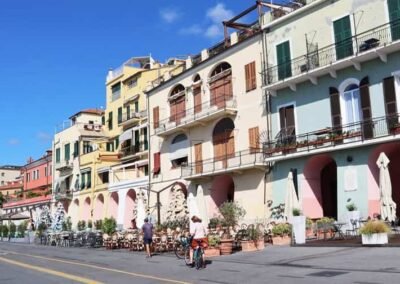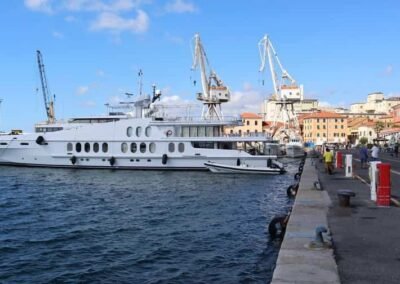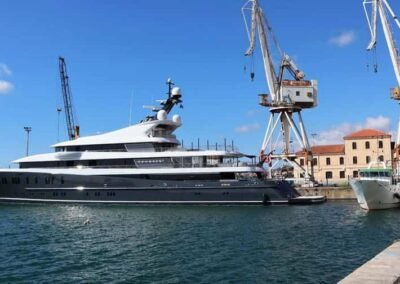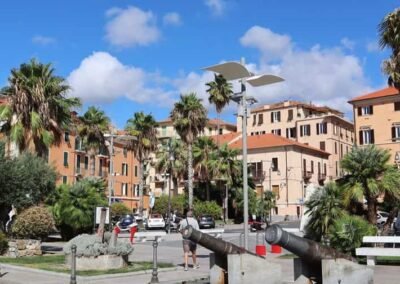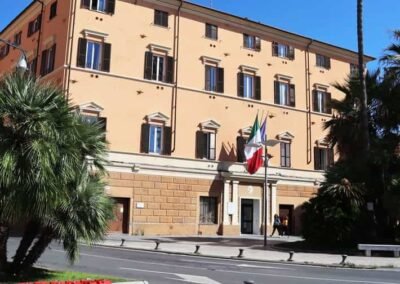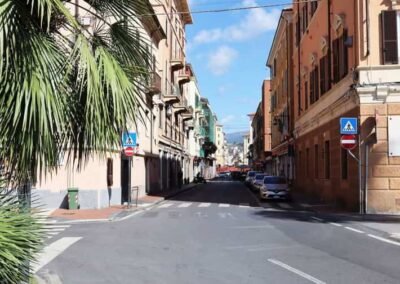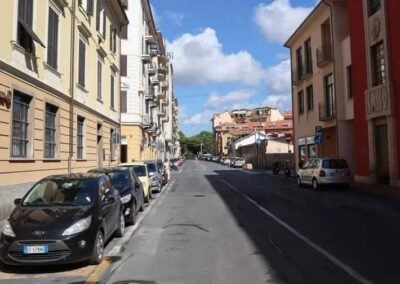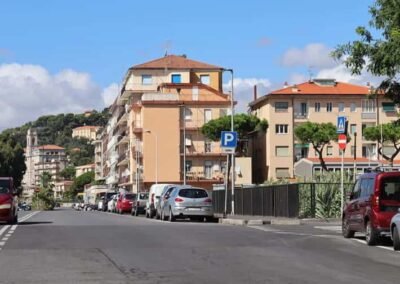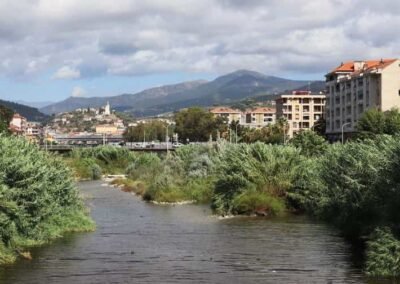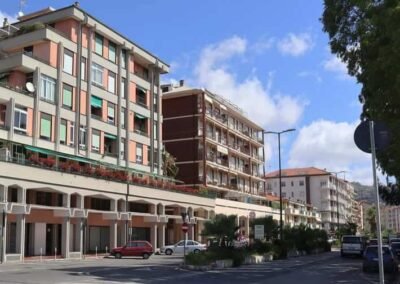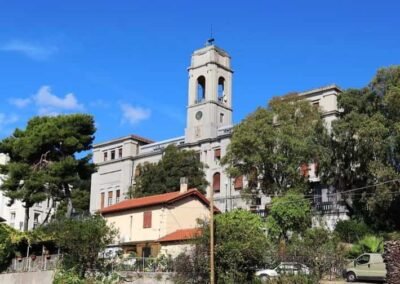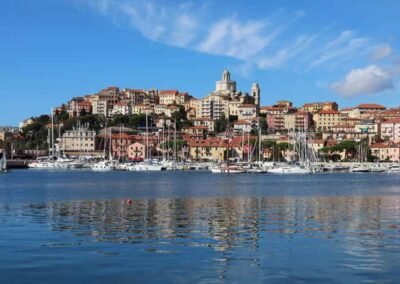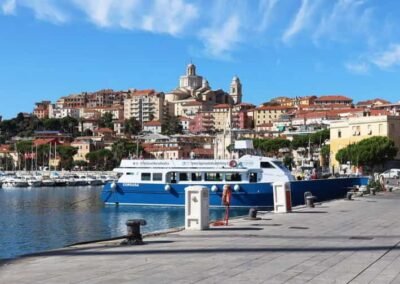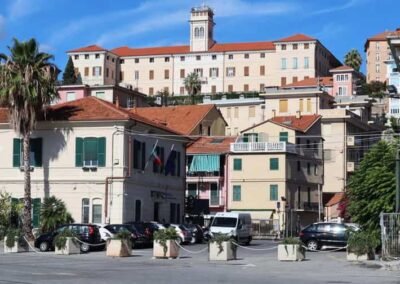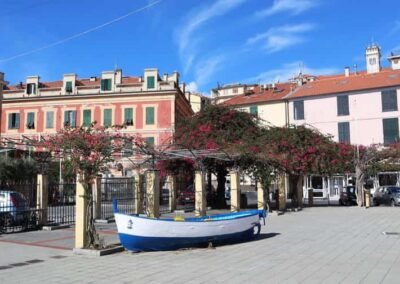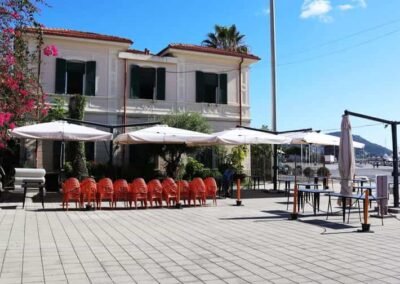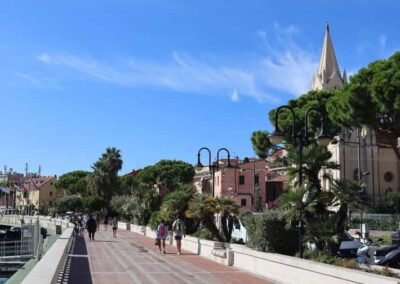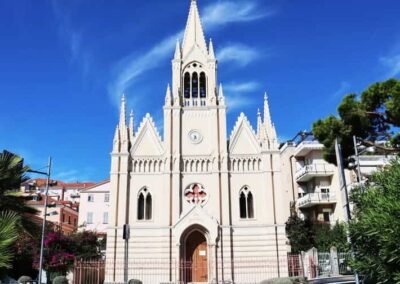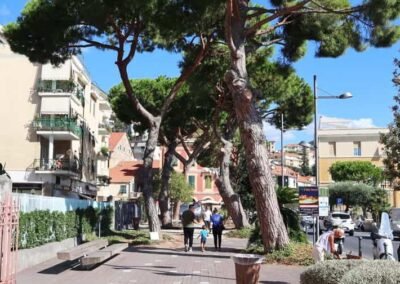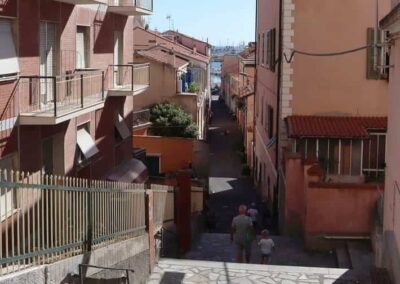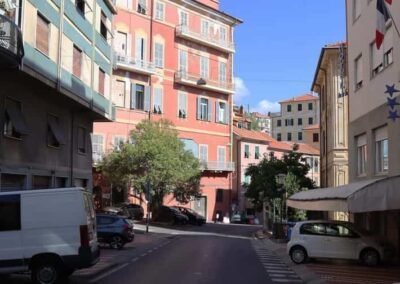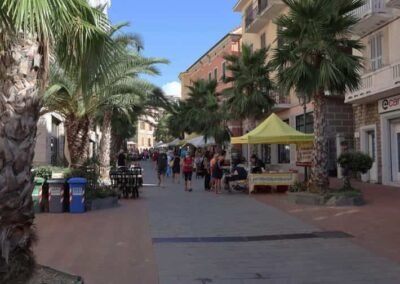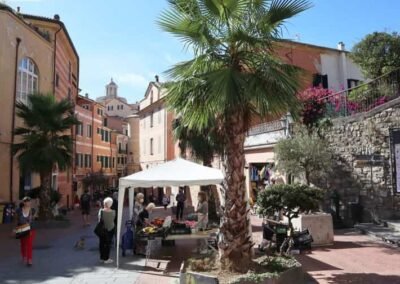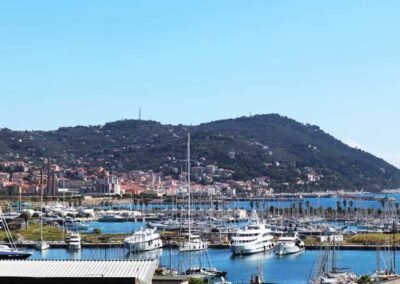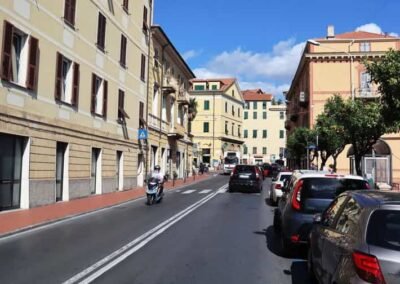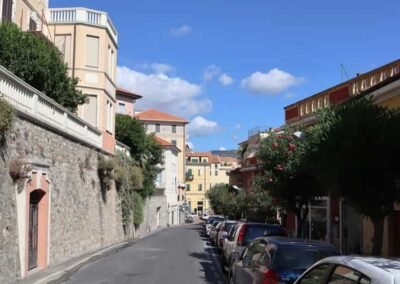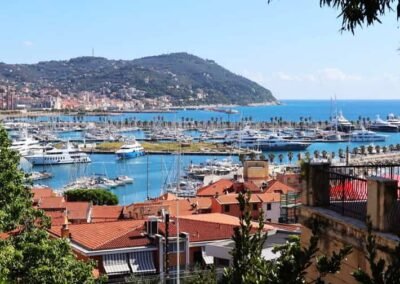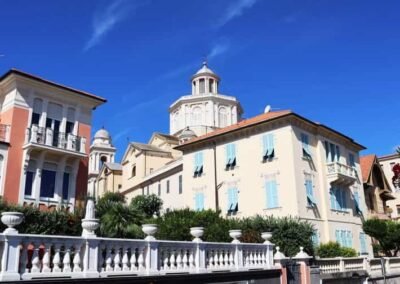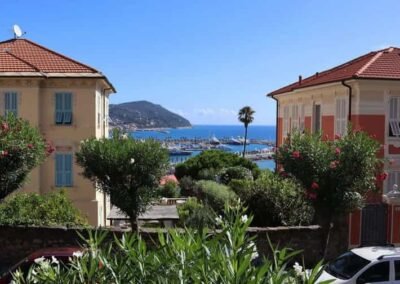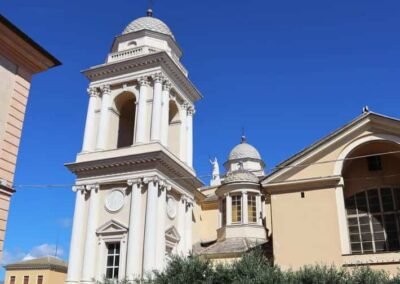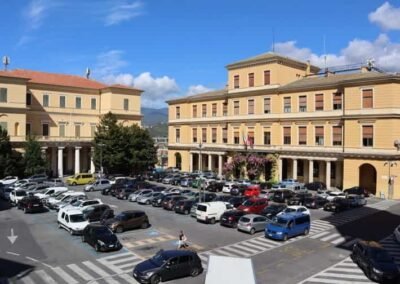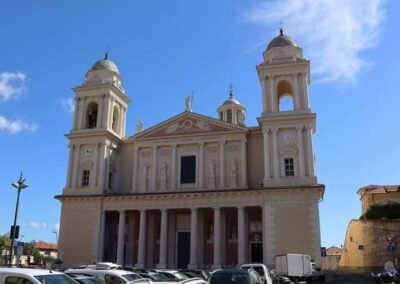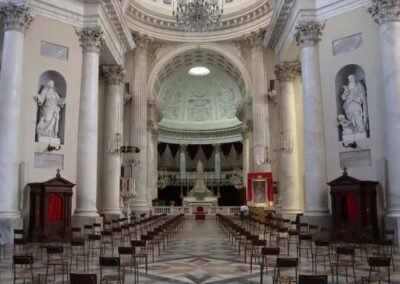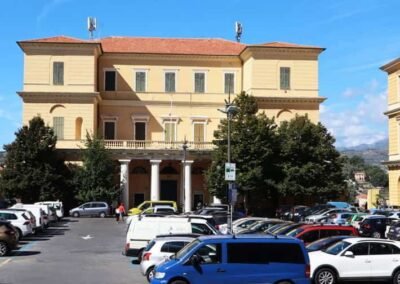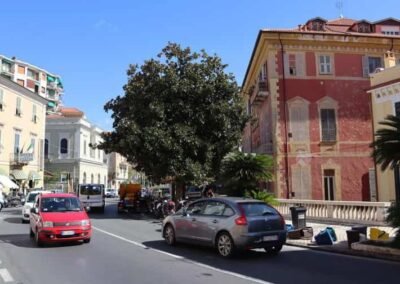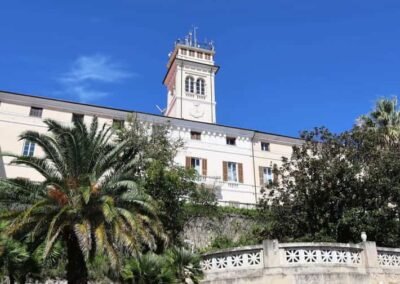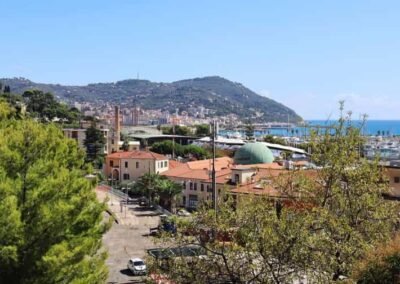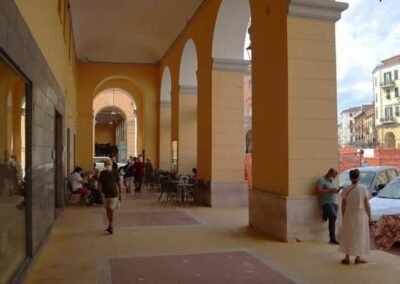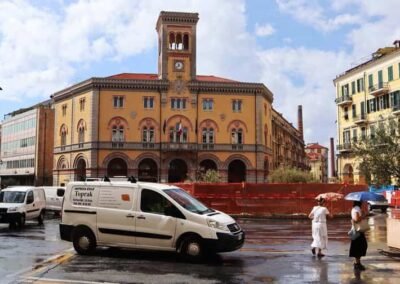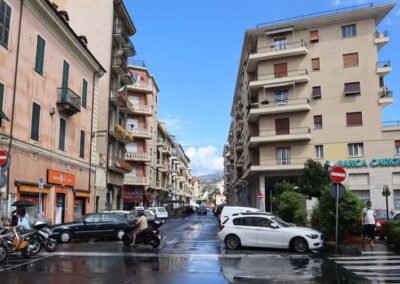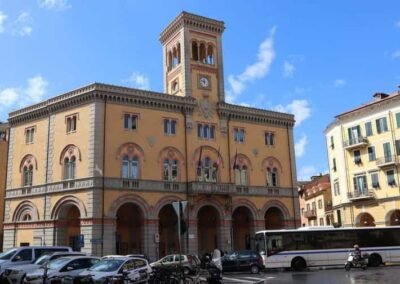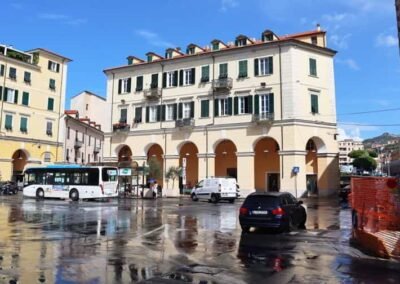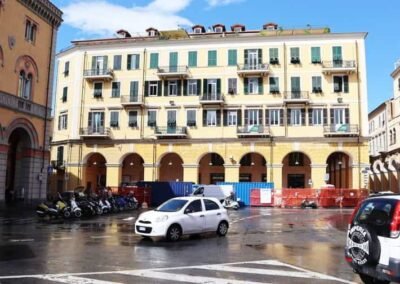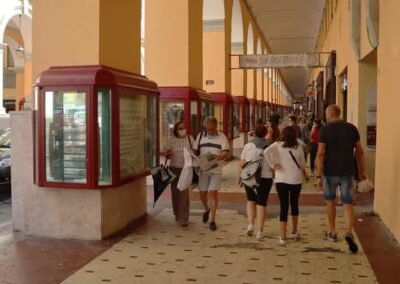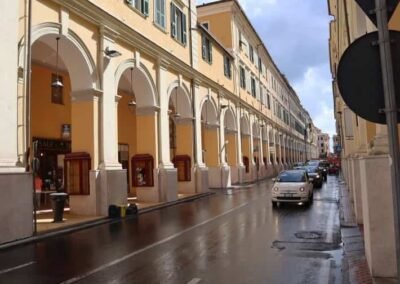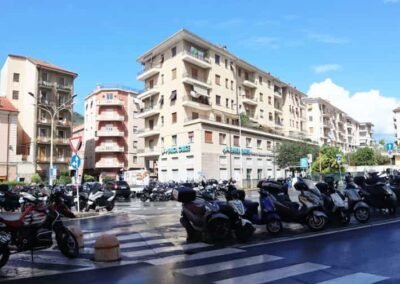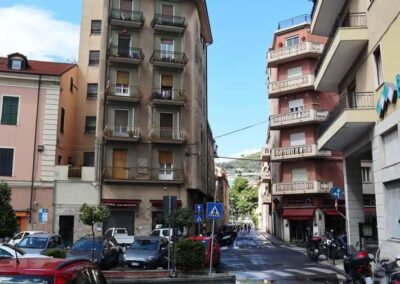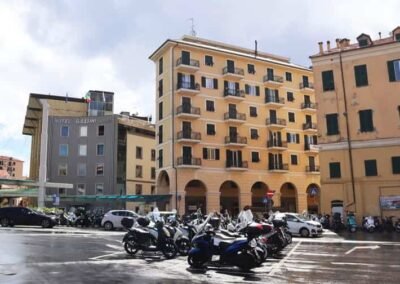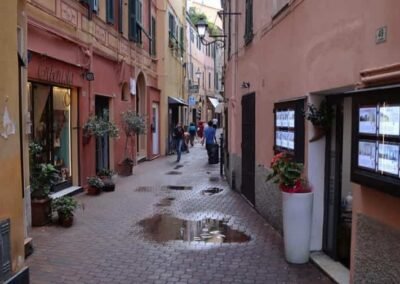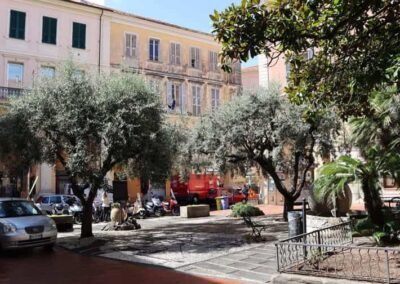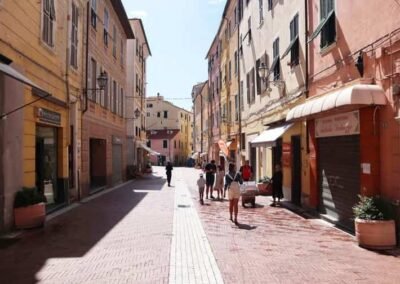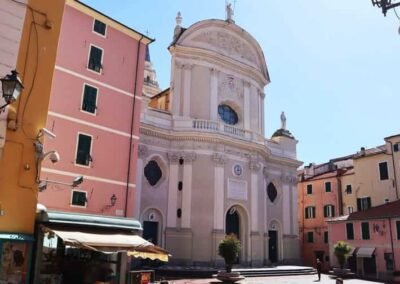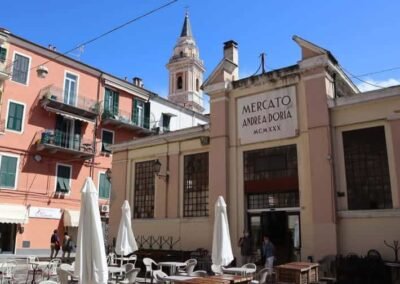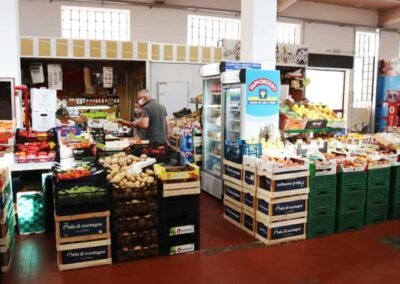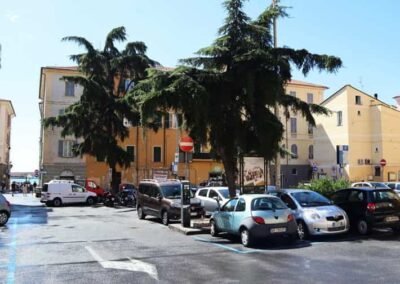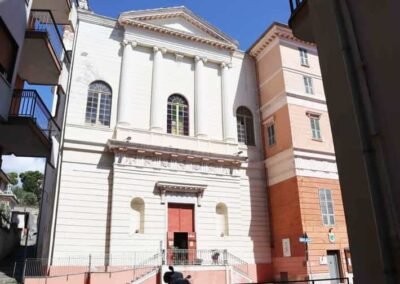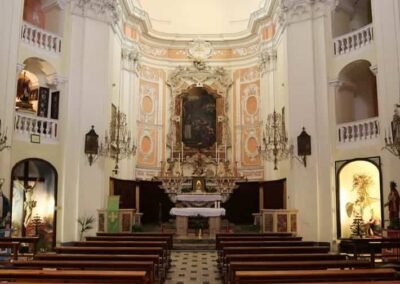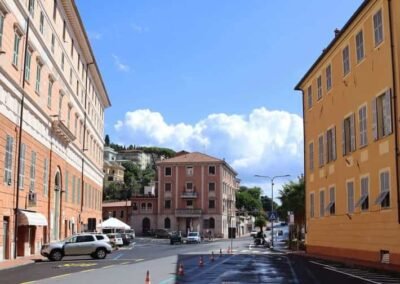HOME
THE REGIONS OF ITALY
PLACES IN ITALY
Italy in Photos
Corso Aurelio Saffi, 18100 Imperia IM, Italy (August 2020)
Imperia
Imperia is a picturesque coastal city located in the Liguria region of northwest Italy. Nestled between the Mediterranean Sea and the foothills of the Alps, it offers a unique blend of natural beauty, historical charm, and vibrant local culture. Known for its mild climate, stunning landscapes, and rich history, Imperia attracts visitors who are drawn to its serene beaches, historic architecture, and delightful culinary traditions. The city is divided into two main districts: Porto Maurizio and Oneglia, each with its distinct character. Porto Maurizio, perched on a hill overlooking the sea, is the older part of the city, characterized by its winding medieval streets, elegant buildings, and a grand cathedral, the Basilica di San Maurizio. Oneglia, on the other hand, is more modern and industrial, historically known as an important centre for olive oil production, which remains a key part of the local economy. Both districts are united by their shared maritime heritage and picturesque harbour views, but they also offer unique experiences for travellers. Imperia has a long and fascinating history that stretches back to Roman times. Its name derives from the nearby Impero River, and over the centuries, it has been influenced by various civilizations, including the Byzantines, Lombards, and Saracens. By the Middle Ages, it had become a strategic maritime centre, and Porto Maurizio flourished as part of the Republic of Genoa. The two districts of Imperia were historically separate towns until they were unified in 1923 under the order of Benito Mussolini, forming the modern city as it is known today.
The city’s location on the Italian Riviera makes it a perfect destination for those seeking a mix of relaxation and cultural exploration. Imperia’s coastline is dotted with sandy beaches, rocky coves, and crystal-clear waters, ideal for swimming, sunbathing, and water sports. The Ligurian Sea provides stunning views, while the nearby Ligurian Alps offer hiking and cycling opportunities for more adventurous visitors. The city’s marina is a hub for yachting enthusiasts, and its vibrant seafront promenade is lined with cafes, restaurants, and bars where visitors can enjoy fresh seafood and local delicacies. Imperia is also renowned for its culinary heritage, with olive oil being one of its most famous products. The city is part of the “Riviera dei Fiori” (Riviera of Flowers), a region known for its olive groves, and its extra virgin olive oil is considered among the best in Italy. The annual Olive Oil Festival, which takes place in November, celebrates this essential part of Imperia’s identity, drawing food lovers from all over the world. In addition to olive oil, the city’s cuisine includes fresh seafood, pasta dishes like trofie with pesto, and an array of Ligurian specialties, often paired with locally produced wines. Culturally, Imperia offers a wealth of attractions, from art galleries and museums to churches and historic landmarks. The Museo dell’Olivo, dedicated to the history of olive oil production, is a must-visit, while the narrow, cobbled streets of Porto Maurizio offer a glimpse into the city’s medieval past. Festivals and events, such as the Vele d’Epoca (Vintage Sails Regatta), highlight the city’s strong maritime traditions, attracting sailing enthusiasts from around the globe. Imperia is a captivating blend of historical depth, natural beauty, and cultural richness. Whether you’re interested in exploring its ancient streets, relaxing by the sea, or indulging in the local cuisine, Imperia offers a unique and authentic Italian experience that reflects the charm and vibrancy of the Ligurian coast.
Worth a Visit
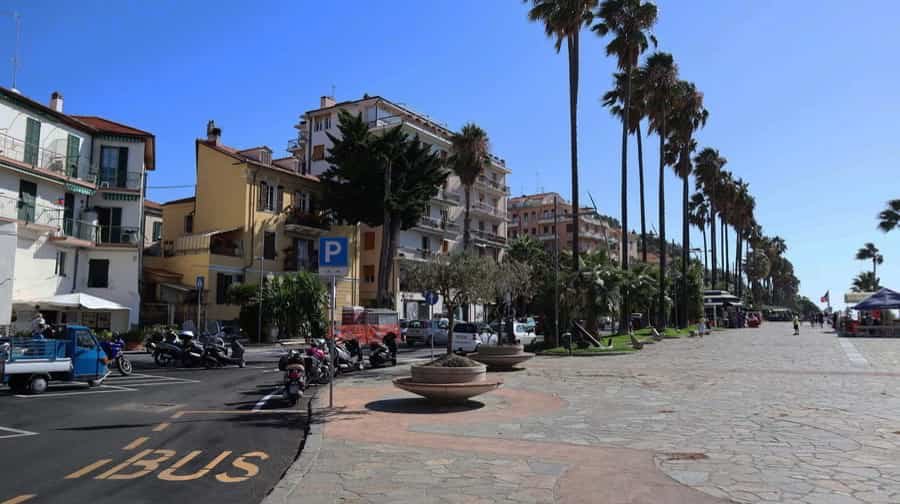
The Via Spianata Borgo Peri in Imperia is a distinctive promenade that combines the elegance of a seaside walkway with the authenticity of a Ligurian neighbourhood. Located in Oneglia, one of the two historic centres that together form the modern city of Imperia, the Spianata stretches along the coastline, offering wide open views of the Ligurian Sea. For both residents and visitors, it serves as a space of leisure, social life, and cultural expression, reflecting the maritime identity of the town and its close relationship with the Mediterranean. The name “Borgo Peri” refers to the district surrounding the promenade, an area historically linked to fishing, trade, and the daily rhythms of seafaring life. Unlike the more secluded villages of the Riviera, this part of Imperia developed as a working neighbourhood, where the sea was not only a backdrop for beauty but also the foundation of economic survival.
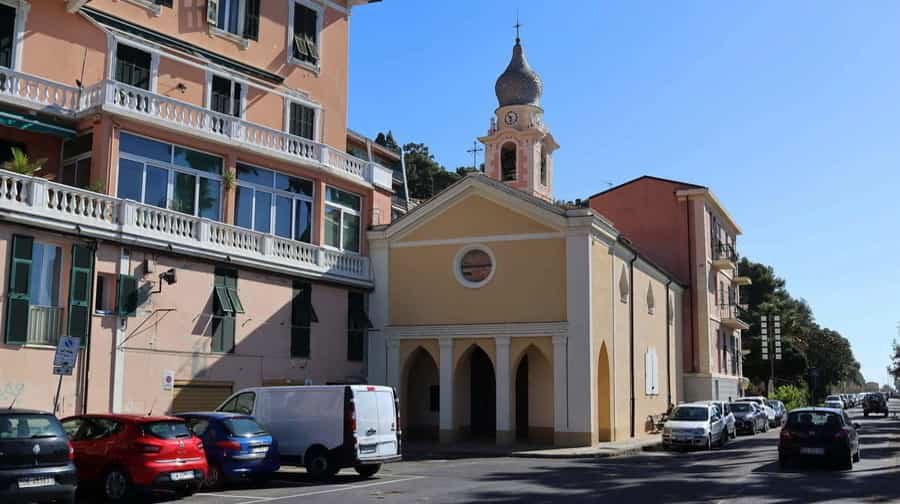
The Chiesa di Nostra Signora di Loreto in Imperia is one of the city’s most beloved landmarks, blending devotion, history, and architecture into a single monument of faith. Located in the district of Porto Maurizio, the church occupies a prominent position overlooking the Ligurian Sea, a setting that enhances its spiritual and aesthetic presence. Dedicated to Our Lady of Loreto, a Marian title deeply rooted in Italian Catholic tradition, the church reflects centuries of devotion and continues to serve as an important place of worship for the local community. The cult of the Madonna di Loreto originated in the town of Loreto in the Marche region, where the Holy House of Nazareth, according to tradition—was miraculously transported in the 13th century.
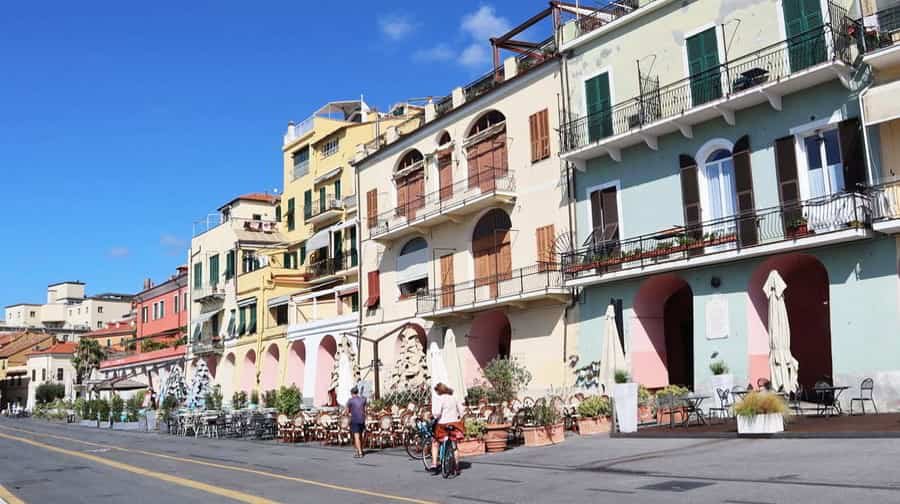
The Calata Giovanni Battista Cuneo in Imperia is one of the most atmospheric and historically significant waterfronts in the city. Located in the district of Oneglia, this elegant promenade stretches along the old port, where colourful buildings face directly onto the sea, creating one of the most iconic views of the Ligurian Riviera. For both locals and visitors, the Calata is more than just a dockside street: it is a lively meeting point, a showcase of maritime heritage, and a stage for the daily rhythms of coastal life. The area takes its name from Giovanni Battista Cuneo, an important local figure, and stands as a tribute to the civic pride of Imperia. Historically, the port of Oneglia was the beating heart of trade and fishing, central to the town’s economic development.
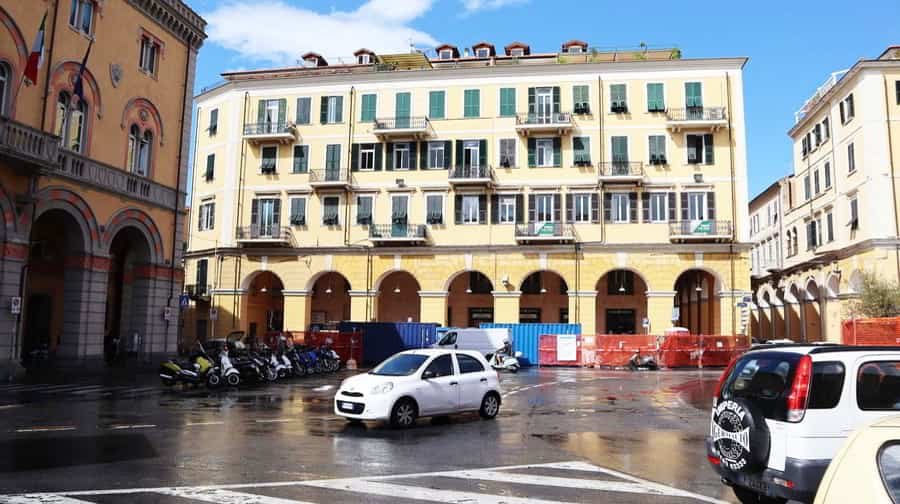
The Piazza Dante in Imperia is the beating heart of the modern city, a spacious and elegant square that reflects both its civic identity and its history. Situated between the districts of Oneglia and Porto Maurizio, Piazza Dante serves as a symbolic and physical connector, embodying the unification of the two towns in 1923 that gave birth to the city of Imperia. Named after Dante Alighieri, Italy’s greatest poet, the square celebrates national pride while functioning as a hub for daily life, cultural events, and civic activities. The creation of Piazza Dante was closely tied to the development of Imperia as a unified municipality. With the merging of Porto Maurizio, Oneglia, and several smaller villages, a need arose for a central space that could represent the new civic identity.

The Mercato Andrea Doria in Imperia is one of the most vibrant and authentic places to experience the city’s daily life. Located in the district of Oneglia, near the port and the colourful Calata Giovanni Battista Cuneo, the market is both a practical centre of commerce and a cultural landmark. Named after Andrea Doria, the famous 16th-century admiral from nearby Genoa, the market celebrates Liguria’s maritime traditions while serving as a lively meeting place where residents and visitors encounter the true flavours and atmosphere of the Riviera di Ponente. The market is housed in an impressive early 20th-century building, designed with large open spaces and high ceilings to accommodate the bustling activity of vendors and customers. Its architecture reflects a mix of functionality and elegance, with arcades and wide entrances that invite passers-by to step inside.
Photo Gallery of Walk 1 – Salita Ardoino to Piazza Nino Bixio
Approximately 1.42 km – 0.88 miles
The walk starts in Salita Ardoino – Via Ospedale – Via Giacomo Agnesi – salita Frati Minimi – Via Aurelia – Via del Collegio – Via Palestro – Piazza Goito – Via Ludovico Maresca – Via Bormano – Calata Giovanni Battista Cuneo – Piazza Nino Bixio -Via Spianata Borgo Peri – Via Angiolo Silvio Novaro – Walk back to Piazza Nino Bixio
Photo Gallery of Walk 2 – Calata Giovanni Battista Cuneo to Via Scarincio
Approximately 3.93 km – 2.44 miles
The walk starts in Calata Giovanni Battista Cuneo – Piazza E.De Amicis – Via Generale Manuel Belgrano – Via de Sonnaz – Lungomare Amerigo Vespucci – Lungomare Marinai d’Italia – Molo San Lazzaro – Porto Di Imperia, Calata Anselmi – Via Scarincio
Photo Gallery of Walk 3 – Via Rambaldo to Viale Giacomo Matteotti
Approximately 1.43 km – 0.89 miles
The walk starts in Via Rambaldo – Via Giuseppe Pirinoli – Via Sebastiano Caboto – Viale Giacomo Matteotti – Via Felice Cascione – Via XX Settembre – Corso Giuseppe Garibaldi – Corso Aurelio Saffi – Piazza Miradore – Via Gaetano Cantone – Piazza Duomo – Via Sebastiano Caboto – Via S. Maurizio – Via Felice Cascione – Viale Giacomo Matteotti
Photo Gallery of Walk 4 – Piazza Dante to Via Giovanni Amendola
Approximately 0.78 km – 0.48 miles
The walk starts in Piazza Dante – Via Silvio Bonfante – Via Dietro Il Duomo – Via Giuseppe Parini – Via Don Abbo il Santo – Piazza Gioacchino Rossini – Salita Ardoino – Via Ospedale – Via M. Giuseppe Pira – Via Ospedale – Via S. Giovanni -Piazza S. Giovanni – Via S. Giovanni – Mercato Andrea Doria, Via S. Giovanni – Via Ludovico Maresca – Piazza Goito -Via Santa Elisabetta – Via Giovanni Amendola – Chiesa Padri Minimi, Salita Frati Minimi – Via Giovanni Amendola
COPYRIGHT © 2018-2025 ITALY IN PHOTOS - ALL RIGHTS RESERVED
